Eight
TOURISM
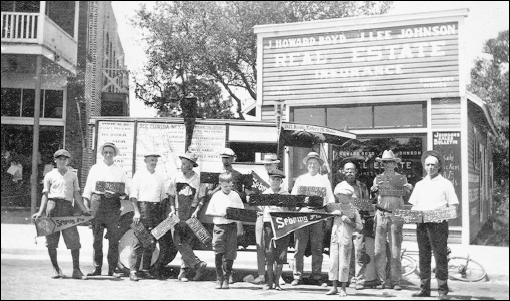
Enthusiastic promoters stood on the Circle in 1921 holding pennants and signs proclaiming Sebring’s location and advantage: “On the Ridge. Health Water.” The J. Howard Boyd and J. Lee Johnson Real Estate and Insurance agency advertised citrus groves, building lots, and bungalows. The remodeled real estate office was formerly the Sebring Confectionary adjacent to the Zeall Building at the corner of South Center Avenue and Circle Drive. (Courtesy Sebring Historical Society.)
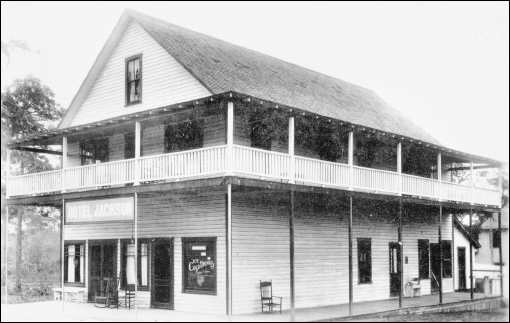
Hotel Jackson offered the first full-scale downtown accommodations when it opened in 1912 at the corner of the Circle and South Commerce Avenue as W. G. Cason’s Hotel; this photograph likely dates from late 1913. The two-story pine hotel burned in Sebring’s first major fire in 1914. It was replaced by another building that closely resembled this one just off the Circle on South Commerce Avenue at Wall Street. (Courtesy Sebring Historical Society.)
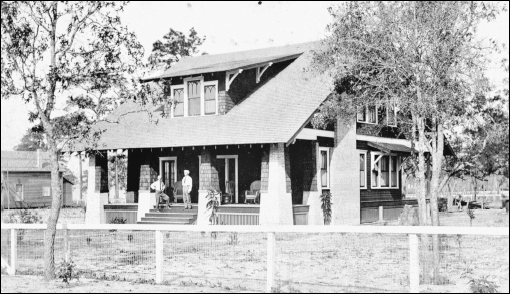
The Amos Elroy Lawrence House was constructed in 1912 on West Center Avenue as the second permanent house in Sebring; it was demolished in 1973. From the 1920s, this distinctive home served as the Grey Top Inn, catering to an exclusive tourist trade. Amos Elroy Lawrence (1862–1932) was a member of the Pittsburg Party and served as mayor, county judge, and city and county attorney during his distinguished career. (Courtesy Sebring Historical Society.)
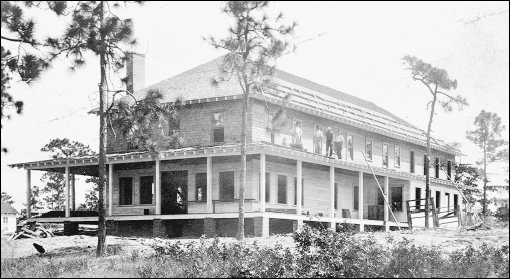
The Arrowhead Hotel was the earliest large tourist hotel and was built by George Sebring in 1912 on Lakeview Drive. The Chamberlain cottage (see page 19) may be seen at far left. For a time it was the home of hotelier Frank B. Chamberlain, and it became a tool and paint house for the hotel. Bill and Nettie Amy of Asbury Park, New Jersey, managed the Arrowhead. (Courtesy Sebring Historical Society.)
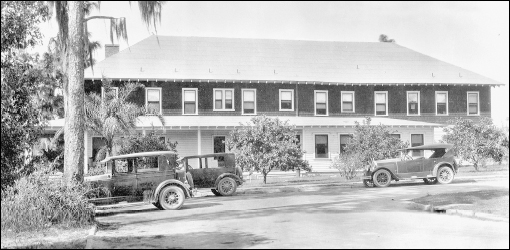
Verdelle Sebring Medlin, daughter of Payne and Ruth Amy Sebring, recalled in 2004 that this hotel “was named the Arrowhead for the numerous Indian arrowheads that were found in and around the lake.” Bill and Nettie Amy were Verdelle’s maternal grandparents. The hotel was sold during the late 1920s, renamed the Pennsylvania Hotel, and was demolished in the 1960s to make way for the Edgewater Arms condominium. (Photograph by Woodward, courtesy Sebring Historical Society.)
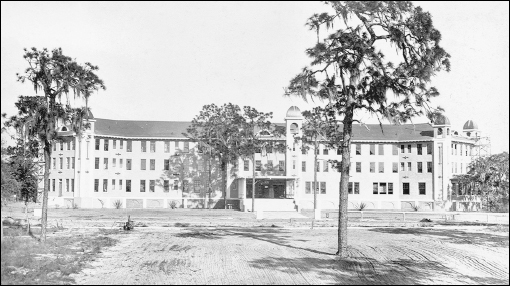
Constructed by George E. Sebring and contractor B. A. Cope a scant four years after his community was founded, the sweeping Mediterranean Revival–style Kenilworth Lodge has enjoyed a lasting reputation as the city’s finest hostelry. Located on Lakeview Drive SE within easy walking distance of the Circle, the Kenilworth originally catered to northerners escaping harsh winters and was only open for several months each year. (Courtesy Sebring Historical Society.)
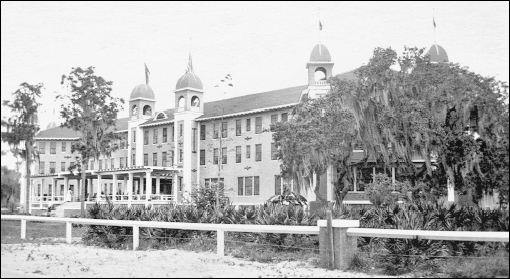
This photograph of Kenilworth Lodge dates from 1916–1919 when the lodge was still owned by George E. Sebring. Later visitors arriving by train were greeted by cars from Kenilworth Lodge and were taken to the 320-acre site, where they enjoyed an 18-hole golf course, a terraced garden and orange grove, and recreation on Lake Jackson. (Courtesy Sebring Historical Society.)
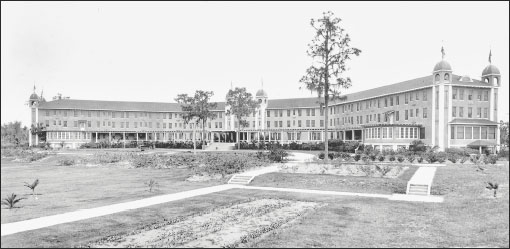
The popularity of Kenilworth Lodge necessitated an expansion in 1919. The north and south wings were added to the central building, and a large porch—since removed—was added to the west side. Nearly all of the rooms had private baths, save for a half-dozen family suites with shared baths. This image is from April 1926. (Photograph by Burgert Brothers Tampa, courtesy Sebring Historical Society.)
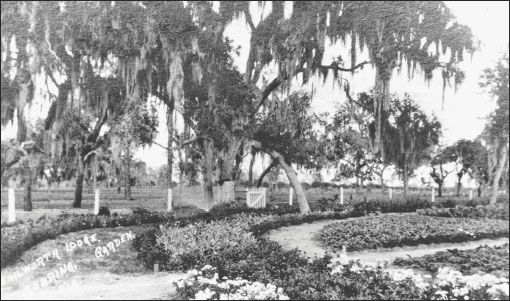
Kenilworth Lodge and Florida governor Cary A. Hardee hosted the nation’s governors for a portion of the national Governors’ Conference in November 1924, which included a tour of the state. They were welcomed to Sebring by event host Ira Rigdon and John E. Connelly, president of Kenilworth Lodge. Kenilworth Lodge was placed on the National Register of Historic Places in 2000. (Photograph by Field, courtesy Sebring Historical Society.)
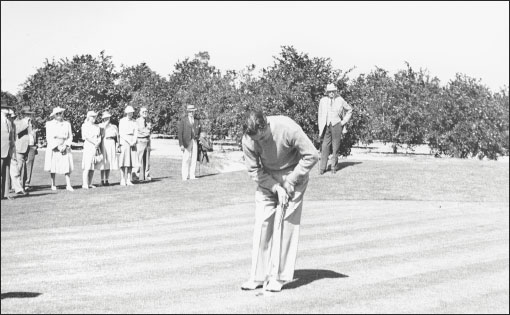
The undulating 18-hole Kenilworth Lodge golf course hosted winter tournament play as early as the 1920s. The December 6, 1924, New York Sun lauded the 6,300-yard course, reporting that national open champion Cyril Walker and club pro James Maiden were representing the lodge in league play. This photograph likely dates from the 1940s and shows how close the course was to the lodge orange groves. (Courtesy Sebring Historical Society.)
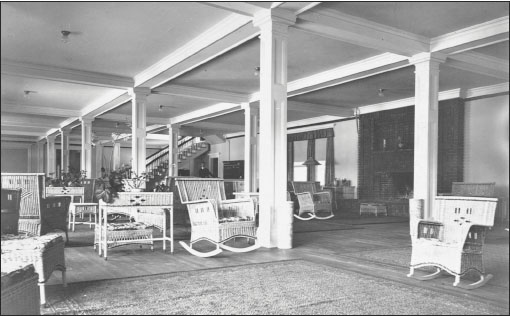
The Kenilworth Lodge lobby was an impressive 4,000 square feet with a grand staircase, an elevator, a large fireplace, and wicker furniture throughout. The lodge’s covered pier on Lake Jackson was visible from the front porch. Since 1995, the Kenilworth has been owned by Mark and Madge Stewart, who first leased the lodge in 1987. (Courtesy Sebring Historical Society.)
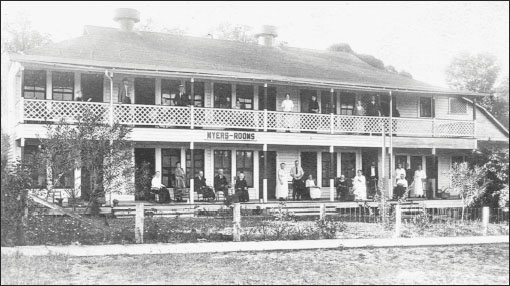
Myers Rooms was built in 1919 at the corner of North Pine Street and Pomegranate Avenue. It served as a boarding house for winter visitors, later became the Pinehurst Apartments, and was demolished in 1995. In 1980, longtime teacher Esther Ritter recalled that when she arrived in Sebring in 1923, accommodations were scarce and expensive; luckily a local home housed unmarried female teachers. (Courtesy Sebring Historical Society.)
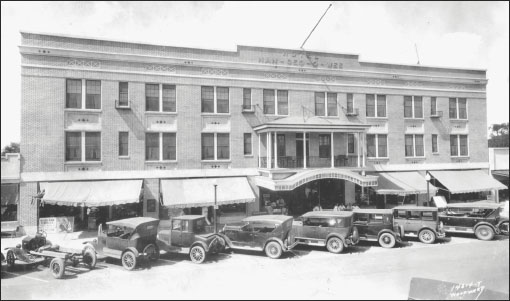
The Nan-Ces-O-Wee Hotel was constructed by George Sebring in 1923 at a cost of more than $100,000. Located on North Ridgewood Drive adjacent to the George Sebring Building (1923), the Nan-Ces-O-Wee included 60 hotel rooms upstairs and five street-level storefronts. The year-round hotel advertised “American Plan” room rates of $5 and under, and proclaimed “No sunshine, no charge for rooms.” (Photograph by Woodward, courtesy Sebring Historical Society.)
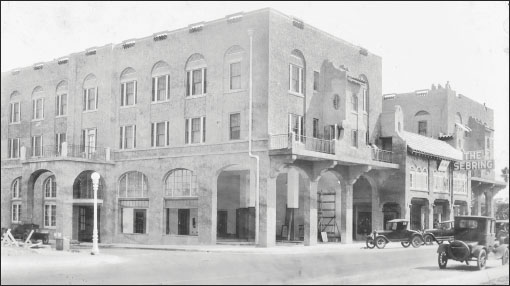
The Sebring Hotel was constructed by H. Orvel Sebring in 1925 at the corner of Oak Avenue and South Ridgewood Drive. The hotel served as a social center for decades until it became the Palms Nursing Home in 1961. In 1984, Jack Hancock remembered that the Sebring Hotel was a popular meeting spot for soldiers from Hendricks Field and their girlfriends. The Sebring Hotel was demolished in 1985. (Courtesy Sebring Historical Society.)
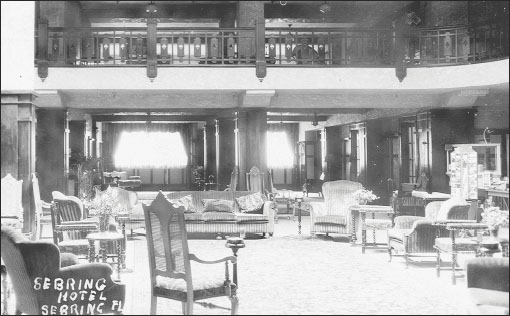
The lobby of the Sebring Hotel was handsomely appointed and featured a pipe organ located on the mezzanine level adjacent to the central staircase that was used during Sunday afternoon concerts. Longtime Sebring resident Martha Hammond recalled in 1984 that musical accompaniment during dinners was provided by a three-piece orchestra. This photograph shows the lobby and mezzanine shortly after construction. (Courtesy Sebring Historical Society.)
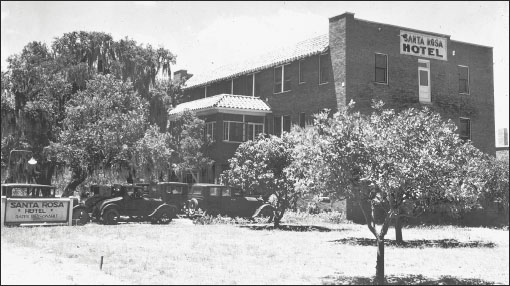
The 30-room brick Santa Rosa Hotel was constructed on North Ridgewood Drive in 1923 by pioneer resident Aaron Withers. He was the town’s first marshal and first fire chief, and served as president of citrus company Withers and Harshman. In 1935, the Santa Rosa was purchased by Martin and Mary McGee; after Martin’s death in 1948, Mary managed the hotel until the 1980s. (Courtesy Sebring Historical Society.)
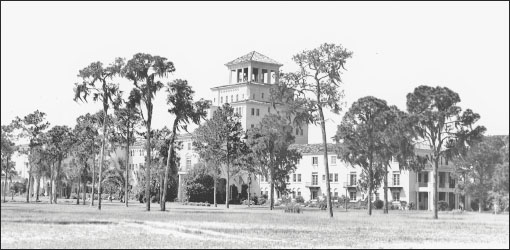
The spectacular Harder Hall opened to great acclaim in 1928 with 200 guest rooms in a three-story, Spanish-style edifice with a seven-story central tower, adjoining a golf course with homes planned for the 2,000-acre property. The hotel remained open during the Depression but sat vacant for many years until a series of renovation attempts between the 1980s and 2007. The city assumed ownership of Harder Hall in July 2007. (Courtesy Sebring Historical Society.)
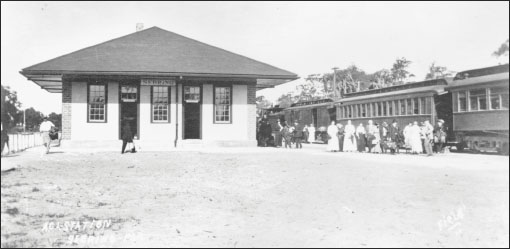
The second Atlantic Coast Line Railroad station was situated north of the Circle on Eucalyptus Street. Constructed in 1917 to replace the first station at the end of North Commerce Avenue, this station remained in use until the 1960s. It was demolished when the Sebring Parkway was constructed along a portion of the old ACL right-of-way. This photograph dates from about 1919. (Photograph by Field, courtesy Sebring Historical Society.)
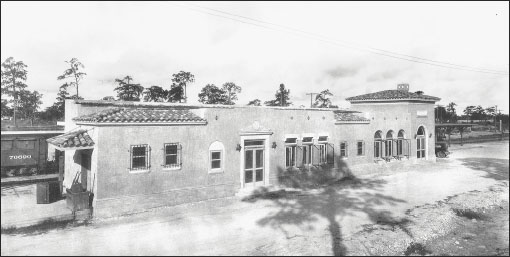
The Seaboard Airline Railroad station was constructed in 1924 as Sebring’s third station, a year before this photograph was taken. The Sebring White Way reported on June 20, 1924, that $30,000 was required to purchase right-of-way land for the tracks so that the station could be located within the city. The 850 residents raised the required capital in just 30 days, a remarkable feat. (Photograph by Woodward, courtesy Sebring Historical Society.)